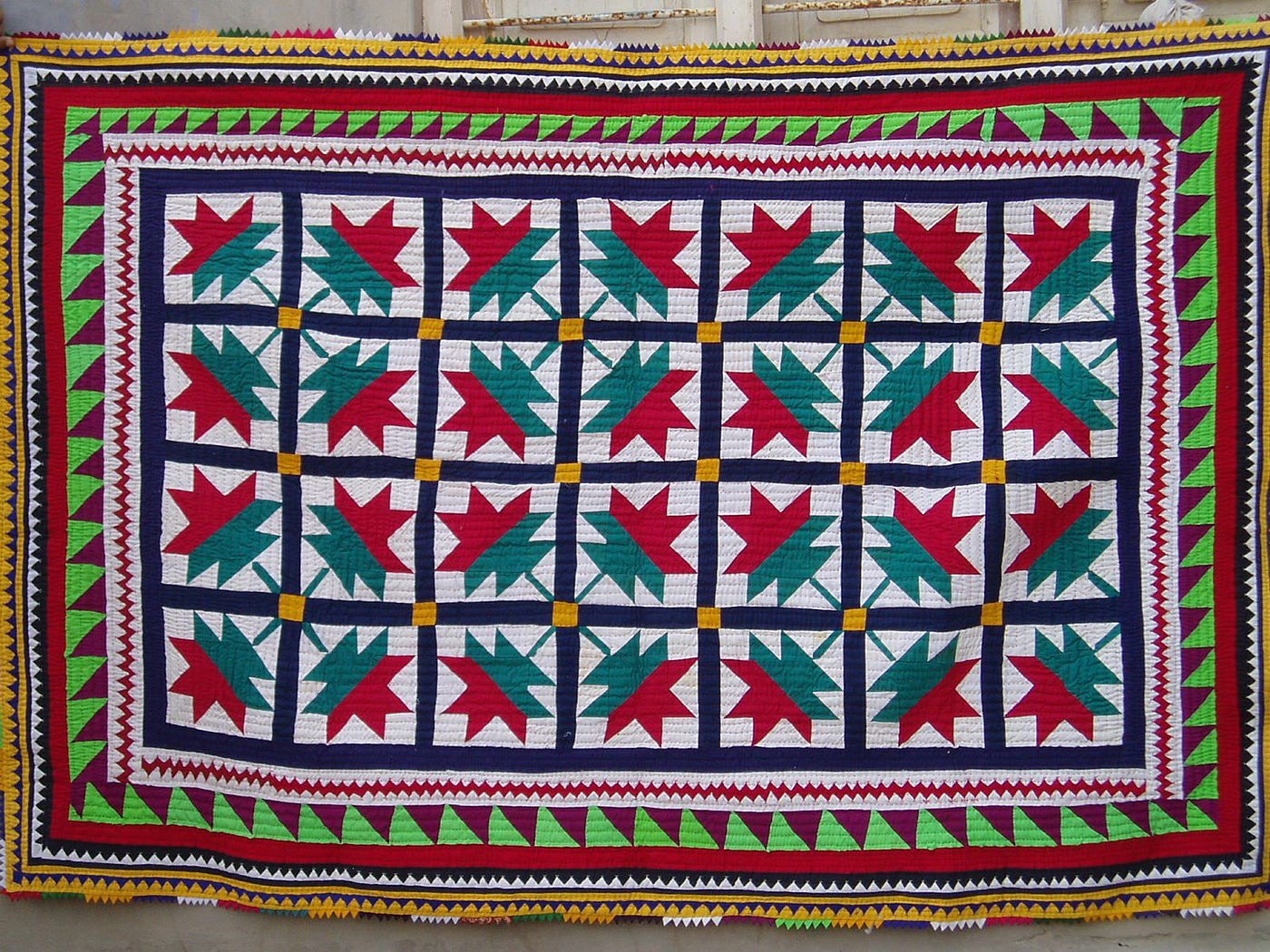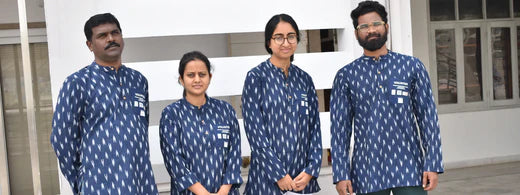
SUSTAINABLE CRAFTSMANSHIP: TRADITIONAL INDIAN METHODS OF UPCYCLING FABRIC
In a culture where clothing often passes through at least three cycles of consumption—starting as a new garment, moving to a hand-me-down for siblings, and eventually becoming a kitchen rag—the ethos of reusing and upcycling is deeply ingrained in Indian society. This mindset has naturally permeated India's second-largest employment generating sector: textiles. Throughout the country, people have found innovative and creative ways to upcycle fabric scraps, turning what might be considered waste into something beautiful and functional. Here is a closer look at some of the traditional upcycling methods in India:
PATCHWORK
- Kaithoon: Originating from Rajasthan, Kaithoon is a traditional patchwork technique used primarily to create intricately patterned quilts known as 'Gudri'. These quilts are crafted by stitching together pieces of fabric, often repurposed from old sarees and garments. Gudri quilts are often passed down through generations, embodying memories and traditions within their fabric. Watch how these quilts are made here!
-
Ralli Quilts: commonly found on the village beds of Sindh and Punjab, they are created by stitching together small patches of brightly coloured fabric in a collage-like manner. Techniques like patchwork, applique and embroidery are used to achieve geometric designs, which often include traditional motifs.

APPLIQUE
-
Pipli work: This Odissi artwork is a vibrant appliqué technique where bright, colourful patches of fabric are sewn onto a base cloth to create decorative patterns. This method is commonly used to make wall hangings, canopies, traditional umbrellas, and even ceremonial decorations. Pipli work is an important cultural symbol, often seen in temples and during festivals. The appliqué work is most prominent in the cloth cover of the three chariots in which the deities of Puri temple travel every year during the Ratha Yatra.

VISIBLE MENDING
-
Kantha Embroidery: Practiced in West Bengal and Bangladesh, Kantha is a form of visible mending that involves stitching together old fabrics with simple, running stitches. This technique is oftentimes used to strengthen worn-out fabric thus, prolonging the garment’s lifespan. Traditionally, women would repurpose old sarees and dhotis by layering them and sewing them together to create quilts, bedspreads, and even garments. The beauty of Kantha lies in its simplicity; the repetitive stitching creates intricate patterns that add texture and life to the fabric.

REPURPOSING TEXTILE WASTE
-
Chindi Rugs: Chindi rugs are a brilliant example of repurposing textile waste. Popular in Maharashtra and Gujarat, these rugs are made by braiding or weaving together strips of leftover fabric scraps to create vibrant, multi-textured rugs. Chindi rugs are known for their durability and unique appearance, where no two rugs are exactly alike.

These traditional upcycling methods not only preserve India's rich textile heritage but also embody sustainable practices that are increasingly relevant today. Each technique reflects a deep connection to the land, culture, and community, turning discarded materials into works of art that carry forward stories, traditions, and memories.
UPCYCLING – HERE AND NOW
As the global conversation around sustainability gains momentum, modern Indian designers and brands are increasingly embracing upcycling, taking cues from traditional practices while innovating for contemporary fashion. Here’s how some of India’s conscious brands are redefining upcycling in today’s fashion landscape:
Label Ka-Sha- At Label Ka-Sha, fabric waste is upcycled right at the source. Typically, up to 16% of fabric can be discarded during the cutting and stitching process. To combat this, Ka-Sha launched the “Heart to Haat” initiative, which repurposes fabric scraps into a variety of products, including embroidery, footwear, patchwork, stuffed toys, macramé, and bags. The brand also collaborates with friends and other designers in the industry to collect additional scrap fabric, ensuring that minimal waste is generated.
Kritikala- With a strong commitment to sustainability, Kritikala has integrated upcycling into its production processes. The brand not only repurposes old newspapers into packing bags and covers but also transforms small fabric scraps into unique patchwork items. These scraps are used to create table covers, bed covers, and laptop bags. Additionally, smaller pieces of fabric that are too small for patchwork are utilized as quilting material for bag straps, ensuring minimal waste and adding a distinctive touch to each product.
Upasana- Upasana, a brand based in Auroville, employs a creative approach to achieve zero-waste fashion. They use fabric scraps generated from various cutting and sewing processes that would otherwise be discarded to create one-of-a-kind garments. By incorporating these remnants into elegant, asymmetric patterns, they create fun and unique garments, stoles and bags. This technique allows them to turn odd-shaped scraps into new, wearable designs, effectively minimizing waste and showcasing the beauty of sustainable fashion.


Leave a comment
This site is protected by hCaptcha and the hCaptcha Privacy Policy and Terms of Service apply.